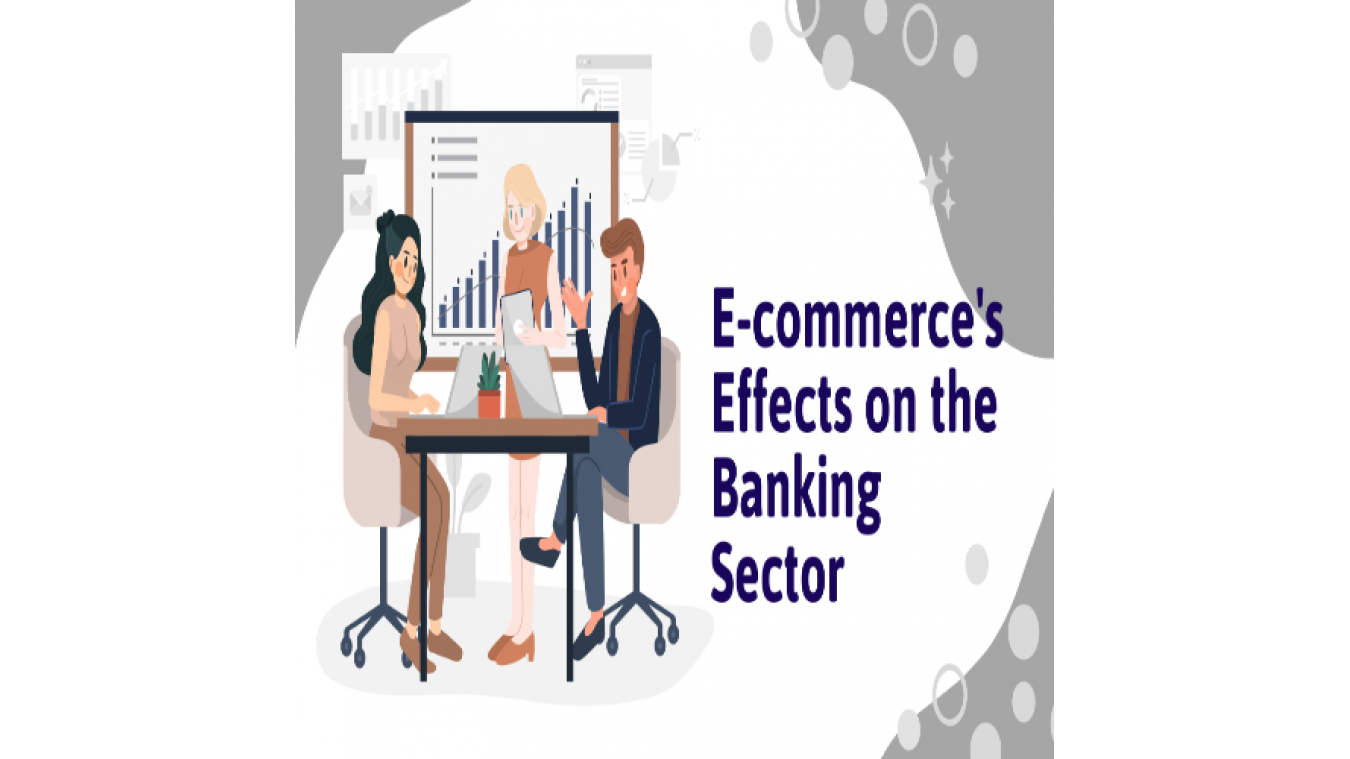
E-commerce's Effects on the Banking Sector
It didn't take long for businesses to start using the internet as a viable channel
for conducting sales and trade. In the early 1990s, internet use among
consumers started to spread, and electronic commerce followed closely
behind. In almost every manner, the shopping experience was changed by the
internet, which has been evolving and growing over the past 30 years. So, how have financial institutions such as banks adjusted? Due to their role in
processing payments for e-commerce goods and services, banks have
transitioned from physical locations to the online financial world. Here are the
principal effects on the banking industry.
Changes from e-commerce in banking
1. Only-online banks
In the past, banks served as organizations that managed customer funds, cashed checks for cash, and offered other financial services. E-commerce has
contributed to the growth of electronic banking. Customers very quickly began
to desire the convenience that online shopping provided in all of their dealings, and digital banking, with options like online accounts, account money
transfers, and eventually online bill pay and mobile check deposits became a
common occurrence in most customer interactions with banks. Due to the
lack of physical presence, numerous banks began offering the same
services—checking, savings, loans, credit cards, and bill pay—online. Leading
the change in online-only banking are banks like Ally.
2. Third-party intermediaries like PayPal
PayPal was created as a safer alternative to providing a business or individual
with your credit card number or banking information. PayPal acts as a
middleman between you and the merchant, vendor, or individual you are
paying. Long before the majority of other financial institutions thought to
improve security, PayPal began promoting itself as a safe and secure
platform for handling payments. In e-commerce contexts, PayPal replaced the
requirement for entering credit card details or bank account numbers with a
single account login, swiftly emerging as a viable payment method.
3. Mortgage and loan providers online
Not only banks but other financial institutions are expanding their online
presence and streamlining online transaction procedures. Companies like
LendingTree help people apply for and secure personal loans without ever
having to meet in person with a loan counsellor, while Rocket Mortgage
enables users to apply for a mortgage or refinance loan entirely online.
4. Financial institutions
Online platforms and smartphone apps are now where people invest. You can
develop investment plans outside of financial advisors' offices, just as you can create savings plans outside of banks. In order to serve the online and e- commerce niche of customers wishing to streamline and modernize their
investment and savings experiences, online only brokers are becoming a thing.
5.Altering the in-store payment methods
In order to facilitate payment for in-person transactions at places like the
grocery store and coffee shop, banks and mobile firms alike have taken to
building technology that makes it simpler to use digital options, like a mobile
device, to safely transfer payment data. In the digital age, consumer payment
options are now safer and simpler thanks to Google Wallet and Apple Pay. One approach to better grasp how all businesses may prepare for the future is
to comprehend the role of e-commerce in banking. Are you considering
cutting-edge and new technology? Are you trying to be innovative or are you
struggling to meet the demands and expectations of your customers? Can
you create a good or service that improves other positive client experiences?
In the era of e-commerce and digital banking, one of the most crucial ways to
remain competitive in any sector is to figure out methods to make your
customers' life easier.

Comments